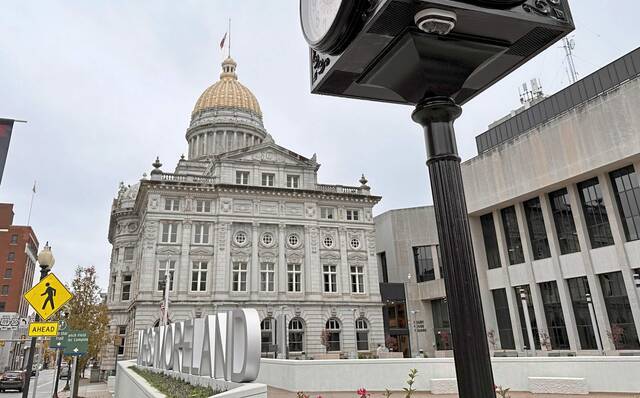Ambulances gain nitrous oxide for pain relief as part of $2M Westmoreland opioid settlement fund
Patients in severe pain who are being transported by a Mutual Aid ambulance will have a nonnarcotic way to find relief during their ride to a hospital.
Dr. Bill Jenkins said the Greensburg-based ambulance service will add nitrous oxide, a commonly used pain medicine, as an option for patients who have opioid use disorder or are concerned about using an opioid pain reliever. He is the service’s medical director.
“The nice thing about it is it’s totally nonnarcotic,” he said.
Mutual Aid on Thursday was awarded $66,000 for the purchase of necessary supplies and employee training. The funding was part of about $2 million doled out this week through Westmoreland County’s cut of multibillion dollar settlements that resolved litigation against drug manufacturers and distributors accused of spreading opioid abuse throughout the United States.
Westmoreland County will be allocated millions of dollars over approximately the next two decades.
Jenkins said the nitrous oxide will be administered through a mask. Ambulances carry fentanyl, a powerful opioid, to treat severe pain. That medication can throw up red flags for patients who either want to or have to avoid the drug, which can be addictive.
“EMS right now doesn’t really have a good option for that,” said Jenkins, who also is director of the emergency department at Independence Health Frick Hospital in Mt. Pleasant.
Many of the programs awarded funding by the commissioners Thursday are already in place, said Tim Phillips, director of the county’s department of community relations and prevention.
“We do want to try to keep a continuation of the momentum providers have already started,” he said. “We can’t have them losing funding.”
Officials want to find more ideas for how to use the money in future years.
Westmoreland County Human Services director Rob Hamilton said officials will be seeking proposals in the coming months for new programs to meet community needs. Those proposals have to meet the restrictions on how the money is allowed to be spent under what is referred to as Exhibit E.
That document outlines ways the funding can be used, such as for treatment, prevention and supporting people in recovery.
In addition to Mutual Aid, the following groups, municipalities and agencies received funding:
• Westmoreland Drug and Alcohol Commission, $435,000 for prevention, treatment and outreach.
• Westmoreland Community Action, $149,040 for expansion and re-implementation of recovery-related workplace and employment programs.
• WIN Workforce Development Program, $142,883 for helping people affected by opioids find jobs.
• North Huntingdon, $195,052 for a DARE program.
• Rostraver, $119,140 for a Take Note program.
• Lower Burrell, $62,833 for a student engagement officer.
• Monessen Police Department, $120,958 for a DARE program.
• Hempfield, $63,630 for a DARE officer in conjunction with Hempfield Area School District.
• Lost Dreams Awakening, $204,054, and Sage’s Army, $183,570, for community peer support.
• Westmoreland County Prison, $260,000 for its medication-assisted treatment program.
• Westmoreland County Department of Community Relations and Prevention, $334,351.
Officials for years have struggled to deal with the growing impacts of the opioid epidemic. From 2014 through 2017, the number of accidental drug overdose deaths in Westmoreland County more than doubled. A record 193 drug-related deaths were reported in 2017, according to the coroner’s office.
After two years of declines, 168 people died from a drug overdose in 2021. That number dipped to 95 in 2023.
Renatta Signorini is a TribLive reporter covering breaking news, crime, courts and Jeannette. She has been working at the Trib since 2005. She can be reached at rsignorini@triblive.com.
Remove the ads from your TribLIVE reading experience but still support the journalists who create the content with TribLIVE Ad-Free.

